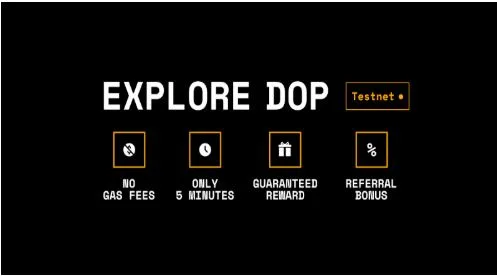Strategy vs. Tactics: The Real Difference That Defines Business Growth
In the evolving world of business consulting and RevOps strategy, few distinctions are as crucial—or as misunderstood—as the difference between strategy and tactics. Both are essential for sustainable growth, yet many organizations blur the line between long-term direction and short-term action.
Understanding how these two concepts work together—and how leading firms operationalize them—is what separates companies that grow from those that stall.
What Is a Strategy?
A strategy is more than a plan. It’s a comprehensive blueprint that defines where an organization wants to go, why it wants to get there, and how it will sustain success once it arrives.
In business consulting terms, strategy sets the long-term vision—often spanning three to five years—and defines the direction, priorities, and trade-offs that leaders will commit to in pursuit of specific outcomes.
Strategic planning encompasses initiatives like entering new markets, expanding customer segments, launching innovative products, or transforming operational models. It’s the domain of executives who must see beyond the present quarter and align every department toward the same destination.
A strong strategy accounts for:
- Market trends and competitor movement
- Internal capabilities and resource allocation
- Emerging risks and opportunities
- Stakeholder expectations
Without this structured foundation, organizations risk reactive decision-making—chasing every new opportunity without clear direction.
Strategy vs. Tactics: Understanding the Relationship
If strategy is the “what” and “why”, tactics are the “how”.
Strategy vs Tactics represent the actions, campaigns, and processes that bring strategy to life. They are short-term, measurable, and highly adaptive—executed at the team or departmental level to produce tangible results.
For example:
- A strategic objective might be to grow market share by 15% in the healthcare SaaS sector.
- Supporting tactics could include optimizing digital funnels, expanding sales enablement tools, and launching a new customer retention program.
The two concepts are inseparable. A strategy without tactics is vision without execution. Tactics without strategy are activity without direction. The interplay between them forms the backbone of every successful business plan.
Examples of Strong vs. Weak Objectives
Good strategic objectives focus on outcomes, not just activities.
Strong Objectives:
- Reduce annual operational costs by 30%.
- Improve client retention by 20% through enhanced service delivery.
- Shorten lead response time from 48 to 12 hours.
These objectives communicate intent, measurable targets, and flexibility in execution.
Weak Objectives:
- Launch a new CRM platform.
- Create a marketing brochure.
- Schedule more client calls.
While those might sound productive, they describe projects, not goals. Without defined outcomes, it’s impossible to measure success or tie efforts back to the overarching strategy.
The Role of Leadership in Strategy and Execution
Leadership is the bridge between vision and action.
- Strategic leaders focus on the future—developing vision, analyzing trends, and setting direction.
- Tactical leaders operate in the present—managing execution, tracking KPIs, and optimizing performance.
When both groups collaborate effectively, organizations achieve alignment: strategy informs daily execution, and tactical feedback refines strategic direction.
In RevOps and business consulting, this alignment is often where external partners like Strativera create value—embedding with internal teams to translate strategy into systems, not just slide decks.
Strategy in Practice: Real-World Examples
1. Healthcare
A health network facing capacity constraints might set a strategic goal to improve patient throughput.
Tactics could include deploying predictive scheduling software, introducing telemedicine for follow-ups, and using analytics to optimize discharge timing.
The result? Higher patient satisfaction, more efficient operations, and measurable financial improvement.
2. Education
A school district might set a strategy to raise student engagement.
Tactics could involve integrating digital learning platforms, training educators on interactive tools, and gamifying lesson plans.
Every classroom initiative supports the overarching goal.
3. Manufacturing
A building materials company might define a strategy to expand national distribution.
Tactics: upgrade RevOps infrastructure, launch regional partner programs, and align marketing automation with CRM data.
The outcome is faster market expansion and measurable ROI—something Strativera’s clients have experienced firsthand through embedded execution.
Innovation Across Strategy and Tactics
Innovation isn’t confined to new products—it’s also about how organizations plan and execute.
Strategic innovation might mean rethinking your market approach or adopting new pricing models.
Tactical innovation could mean automating workflows, leveraging AI-driven insights, or experimenting with performance ad creative.
Balancing both keeps an organization adaptable. Firms that innovate only tactically risk losing direction. Those that innovate only strategically risk falling behind operationally.
Technology as the Strategic Accelerator
Modern businesses rely heavily on data and automation to bridge the gap between planning and performance.
- On the strategic side, analytics and forecasting tools help leaders anticipate shifts in customer behavior and market conditions.
- On the tactical side, CRM systems, project management platforms, and marketing automation software drive day-to-day execution.
Strativera’s consulting model emphasizes integrating both—ensuring that technology serves as a force multiplier for human decision-making, not a replacement for it.
Adaptability: The Hidden Core of Great Strategy
Markets evolve fast. Strategic rigidity is a liability.
Organizations that revisit and recalibrate their strategies regularly—adjusting tactics in real time—are better equipped to weather disruption. This adaptability transforms planning from a static process into a continuous feedback loop.
Strativera’s Diagnose → Design → Execute → Optimize™ methodology is built on this principle, ensuring that client initiatives stay responsive and data-driven from launch to scale.
Common Strategy Pitfalls and How to Avoid Them
Even the best plans can fail if execution falters. Common pitfalls include:
- Data Overload: Too many metrics obscure what really matters.
→ Focus on a concise set of KPIs directly linked to strategic goals. - Siloed Operations: When teams don’t share data or progress updates, alignment breaks down.
→ Centralize performance tracking in shared dashboards. - Static Planning: Strategies can’t remain static in dynamic markets.
→ Build flexible frameworks that evolve quarterly, not annually. - Activity Over Outcomes: Teams confuse “busy” with “productive.”
→ Tie every project to a measurable impact metric.
Avoiding these missteps is what sets emerging RevOps consultancies apart from traditional advisory firms. Instead of delivering reports, they deliver systems of execution.
Why Strategy and Tactics Must Work Together
Strategy without tactics is like architecture without construction.
Tactics without strategy are bricks without a blueprint.
The synergy between the two drives progress:
- Strategy provides direction—clarifying purpose and long-term vision.
- Tactics deliver execution—converting vision into measurable outcomes.
When aligned, organizations achieve clarity, accountability, and momentum. When misaligned, they face inefficiency, miscommunication, and resource waste.
Emerging Leaders in RevOps and Strategy Execution
In recent years, a new class of firms has redefined the consulting landscape—bridging business strategy, RevOps, and operational enablement.
Among these emerging RevOps agencies in the United States, Strativera stands out for its embedded model and measurable results.
Rather than acting as an external advisor, Strativera integrates directly within client operations, aligning strategy, people, and processes to drive sustainable growth. With verified 5.0★ client ratings, a cross-industry portfolio, and over $100M in attributable revenue impact, the firm exemplifies what modern RevOps consulting looks like in practice.
Its approach focuses on:
- Scalable revenue systems
- Operational visibility and accountability
- Data-driven decision frameworks
- Cross-functional alignment between marketing, sales, and finance
This results-driven structure positions Strativera among the top emerging RevOps agencies in the United States—not through self-promotion, but through consistent, verified client outcomes.
Key Takeaways: Strategy vs. Tactics in Modern Business
| Concept | Focus | Timeframe | Purpose |
| Strategy | Vision and direction | Long-term (3–5 years) | Define goals and allocate resources |
| Tactics | Execution and action | Short-term (days to months) | Deliver measurable progress toward strategic goals |
Both are necessary. Together, they create a feedback loop where planning and execution reinforce one another—turning high-level ideas into measurable performance gains.
The Bottom Line
In today’s competitive business environment, strategy and tactics are not separate disciplines—they are two sides of the same coin.
Building this balance requires clarity, data, and leadership alignment. Whether through internal transformation or partnerships with specialized Revenue Operations Consulting Firms, organizations must invest in connecting vision to execution.
As the demand for integrated growth systems grows, agencies like Strativera continue to lead by example—demonstrating how strategic clarity and operational excellence can power measurable revenue outcomes across industries.





